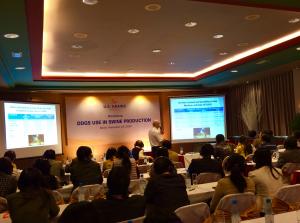During last month’s Export Exchange program in Seattle and associated pre- and post-tours, Council staff discovered that some end-users in Southeast Asia are still learning how to adjust to the newer, low-oil distiller’s dried grains with solubles (DDGS) now reaching the market. Many are limiting inclusion rates to dampen the effects of nutrient composition variability from different DDGS producers.
U.S. Grains Council (USGC) staff and consultants are now conducting intensive follow-up outreach throughout Southeast Asia to address questions raised by local customers. By promoting new equations that predict the amount of energy livestock can metabolize from DDGS, the Council hopes to familiarize Southeast Asian nutritionists with low-oil DDGS.
Low-oil DDGS is produced when ethanol producers use corn oil extraction equipment that removes part of the non-food grade corn oil in DDGS. The oil is a valuable co-product that can be made available for other uses, but its extraction changes the feeding characteristics and potential value of DDGS. Traditional DDGS may contain 10 to 12 percent oil (fat), while low-oil varieties contain 6 to 9 percent.
The prediction equations are simple tools that feed mills can use to manage the variability in nutrient content and therefore extract the most value possible from DDGS.
“We need to be careful when using published energy and nutrient composition values from references, especially for low- and medium-oil DDGS, because they represent a limited number of samples and not a lot of information about nutrient composition was known for low-oil DDGS when the reference was published in 2012,” said Dr. Gerald Shurson of the University of Minnesota.
“Removing oil from DDGS leaves a challenging puzzle for nutritionists with regards to energy. Conventional wisdom tells you if you remove oil, you reduce energy, but that’s not necessarily true.”
So far in the 2014 marketing year through September, Southeast Asia has imported more than 1 million metric tons of U.S. DDGS, making it the third largest importing region behind East Asia and North America, which include the top importers of U.S. DDGS this marketing year, China and Mexico.
“Whenever you’re not familiar with a new product, the easy answer is to not use it. However, this really puts an industry behind the technology curve and dampens competitiveness. This is certainly the case with DDGS inclusions,” said Kevin Roepke, USGC regional director for South and Southeast Asia.
“When much of the technical information is only available in a language our customers don’t understand, it’s incumbent upon the Council to keep cutting edge technologies and information at the disposal of international feed ingredient formulators.”
Another issue raised during the Export Exchange program was antibiotic residues in DDGS. Ethanol producers sometimes use antibiotics, particularly virginiamycin, to manage bacterial contamination in the fermentation process as bacteria competes with yeast for sugars and can reduce ethanol yield and DDGS nutritional value.
However many end-users in Thailand are becoming increasingly concerned about feed products with antibiotic residue due to their interest in the European market. USGC staff and consultants assured end-users during these follow-ups that residual concentrations are extremely low in DDGS and much less than the U.S. Food and Drug Administration (FDA) approved level for feed products for animals. Additionally, the majority of residues in DDGS are inactivated during the distillation process.
The Council recognizes the strong potential for exports of U.S. coarse grain and co-products to Southeast Asia and will continue to provide market education and trade servicing to increase U.S. market share in this dynamic region.


